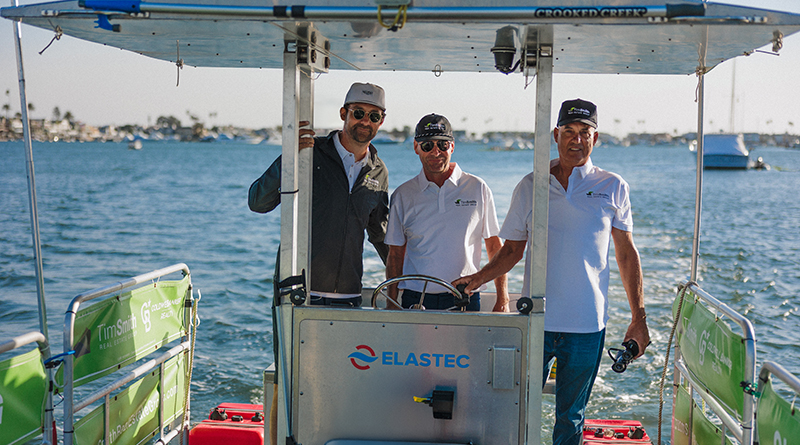 What does it take for a sailboat to be considered a “power driven vessel?” I am an active participant in a sailboat owners’ forum and this question is presented and argued over from time to time but we have never reached a conclusion. We are particularly interested in a scenario where a boat is under sail with engine running but not in gear, which may be the case for a boat that is charging its batteries. If a sailboat with the engine running and with the transmission in neutral is considered a sailing vessel rather than a power driven vessel, what would prevent the operator of a sailboat from shifting in and out of gear whenever the skipper wanted to claim right of way over a power driven vessel?
What does it take for a sailboat to be considered a “power driven vessel?” I am an active participant in a sailboat owners’ forum and this question is presented and argued over from time to time but we have never reached a conclusion. We are particularly interested in a scenario where a boat is under sail with engine running but not in gear, which may be the case for a boat that is charging its batteries. If a sailboat with the engine running and with the transmission in neutral is considered a sailing vessel rather than a power driven vessel, what would prevent the operator of a sailboat from shifting in and out of gear whenever the skipper wanted to claim right of way over a power driven vessel?

Wow. From time to time we receive a question from a reader that makes me raise an eyebrow. This is one of those questions. Let’s start with the fact that the hypothetical operator of the sailboat in our reader’s question is basically trying to use the Rules of the Road as a weapon rather than as a tool for collision avoidance. This is an acceptable attitude in yacht racing, where the Racing Rules of Sailing may be used strategically to gain a competitive advantage. But under any other circumstance, a skipper who contemplates a manipulation of the Rules in the manner suggested by our reader is likely to cause a collision.
So, with our little warning in mind let’s take a look at his question.
We are, of course, discussing the International and Inland Regulations for Preventing Collisions at Sea , or “COLREGS.” The Rules are an international accord, enacted in this country under Title 33 of the Code of Federal Regulations, and we generally refer to them as the “Rules of the Road.”
Rule 18(a) requires most power boats to stay out of the way of most sailboats. Rule 3(c) defines a sailing vessel as “any vessel under sail provided that propelling machinery, if fitted, is not being used.” Our reader is asking whether the Rules provide a specific definition for machinery that is “not being used,” and suggesting that the Rules may be manipulated in the absence of a specific definition.
The Rules do not, in fact, provide a specific definition for machinery that is “not being used.” The Rules do, however, include various provisions to guide vessel operators in the event that they are confronted with an ambiguous circumstance, and this prevents any manipulation of the system in the manner suggested by our reader.
All of the Rules operate under the umbrella of Rule 17, which provides that “When, from any cause, the vessel required to keep her course and speed finds herself so close that collision cannot be avoided by the action of the give-way vessel alone, she shall take such action as will best aid to avoid collision.” In other words, the boat with the right of way has an obligation to avoid a collision if it is apparent that the other boat is not going to take action. In almost every collision, some amount of fault will be allocated to the boat that had the right of way because of a failure to follow this rule.
Various other rules provide guidance to mariners in ambiguous situations. Rule 2(b), for example, requires mariners to consider “all dangers of navigation and collision and to any special circumstances, including the limitations of the vessels involved, which may make a departure from these Rules necessary to avoid immediate danger.” And Rule 5 requires that “Every vessel shall at all times maintain a proper look-out by sight and hearing as well as by all available means appropriate in the prevailing circumstances and conditions so as to make a full appraisal of the situation and of the risk of collision.”
The bottom line here is that, when meeting other vessels at sea, the Rules of the Road do not require one specific rule to be applied in a vacuum. Instead, each encounter with another vessel requires all of the Rules to be read together. As such, we really don’t need to answer our reader’s question about a hypothetical boat operator who tries to blur the distinction between a power boat and a sailboat. That operator, like all vessel operators, has a duty to be constantly aware of the collision risks that exist around him or her. Purposefully creating a collision risk in the manner described by our reader would itself be a violation of the Rules.
David Weil is licensed to practice law in the state of California and, as such, some of the information provided in this column may not be applicable in a jurisdiction outside of California. Please note also that no two legal situations are alike, and it is impossible to provide accurate legal advice without knowing all the facts of a particular situation. Therefore, the information provided in this column should not be regarded as individual legal advice, and readers should not act upon this information without seeking the opinion of an attorney in their home state.
David Weil is the managing attorney at Weil & Associates (weilmaritime.com) in Long Beach. He is an adjunct professor of Admiralty Law at Loyola University Law School, is a member of the Maritime Law Association of the United States and is former legal counsel to the California Yacht Brokers Association. He is also one of a small group of attorneys to be certified as an Admiralty and Maritime Law Specialist by the State Bar of California. If you have a maritime law question for Weil, he can be contacted at (562) 438-8149 or at [email protected].
Ask your question online at thelog.com.







